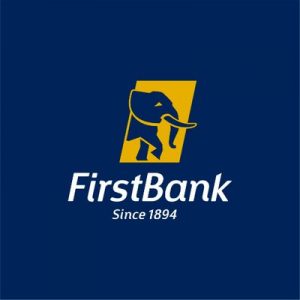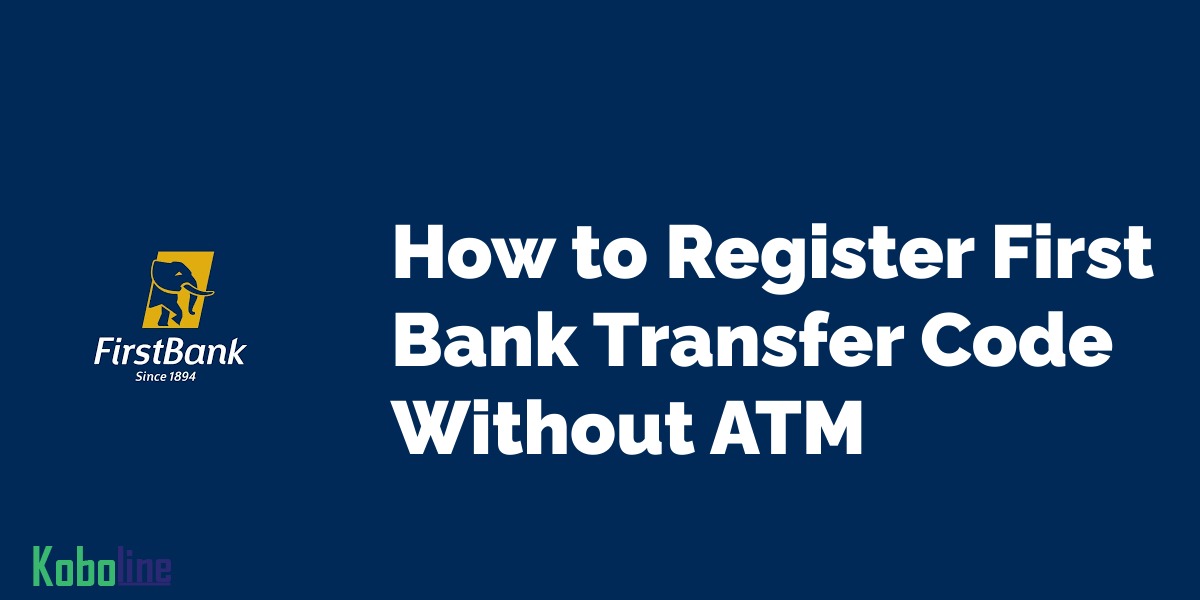last Updated on November 16, 2023
Do you want to be able to transfer from your First bank account using the USSD code without having to use an ATM card? Here’s how to register First Bank transfer code without ATM card.
As technology continues to revolutionize the banking sector, First Bank has introduced a convenient and secure method for initiating transfers without the need for an ATM card.


Whether you’ve misplaced your card or simply prefer a cardless approach, this guide will show you how to effortlessly register the First Bank transfer code, granting you seamless access to a world of digital banking convenience.
Join us as we unveil the simple yet effective process, empowering you to take control of your financial transactions, all at your fingertips.
See: How to Register for First Bank Online Banking
First Bank of Nigeria offers a convenient feature called the First Bank Transfer Code. This service allows you to carry out transactions without the need for an ATM card with the code *894#. This code allows you to bank online, check your account balance and send money to other banks from your registered phone number without using an ATM card.
Let’s get started on how to register the First Bank Transfer Code without an ATM card in Nigeria.
How to Register First Bank Transfer Code without ATM Card
Follow these steps to register for the First Bank Transfer Code without an ATM card:
- Dial *894# on your mobile phone.
- Then Select “1” to proceed with the registration.
- Next, Enter your First Bank account number.
- Then, Provide your personal details as prompted, including your full name and date of birth.
- Create a 5-digit PIN that will be used for transaction authorization.
- Finally, Confirm your PIN to complete the registration process.
Also See: How to Check First Bank Account Balance
Requirements for Registering First Bank Transfer Code
To register for the First Bank Transfer Code without an ATM card, you will need the following:
- A registered mobile number with First Bank
- An active First Bank account
- A mobile phone (small phone or smartphone)
How to Activate Your First Bank Transfer Code
Once you have successfully registered, you will need to activate the First Bank Transfer Code by following these steps:
- Dial *894# on your registered mobile number.
- Then, Select “0” for the Quick Banking menu.
- Next, Choose “Activate Code” from the list of options.
- Finally, Enter your 5-digit PIN to activate the transfer code.
How To Protect Your First Bank Transfer Code
While the First Bank Transfer Code offers convenience, it is essential to prioritize the security of your banking transactions.
Here are some tips to ensure your financial information remains secure:
- Keep your transfer code PIN confidential and do not share it with anyone.
- Avoid using obvious PINs such as your date of birth or sequential numbers.
- Be cautious of fishy attempts and never disclose your personal or financial details to unsolicited or solicited requests.
- Regularly monitor your account activity and report any suspicious transactions to the bank immediately.
How to Contact First Bank Customer Support and Assistance
If you encounter any issues or require assistance with the First Bank Transfer Code registration process, you can reach out to First Bank’s customer support. They have a dedicated team available to address your concerns and provide guidance.
- First Contact Phone Line: 0700FIRSTCONTACT (0700-34778-2668228), 01-4485500, 0708-062-5000.
- FirstContact Email: firstcontact@firstbanknigeria.com
- Website: www.firstbanknigeria.com
First Bank Transfer USSD Code Limit
The First Bank mobile transfer limit is N100,000 Naira. This limit applies whether you’re sending funds to another First Bank account or to accounts in other banks.
But how you use this limit is up to you! You have the flexibility to make a single transaction of 100,000 Naira to one recipient or spread the transaction however you want.
No matter how you choose to utilize the limit, as long as you stay within the 100,000 Naira threshold, your transfers will be successful.
Remember, these transfer code limits are set by First Bank to ensure security and prevent unauthorized transactions.
It’s always important you stay within the specified limits and comply with any additional guidelines provided by the bank.
Additional Benefits of First Bank Mobile Banking
Aside from the convenience of the First Bank Transfer Code, mobile banking offers several other advantages.
These include:
24/7 Access: With mobile banking, you have round-the-clock access to your account, allowing you to perform transactions whenever you need to, even outside of banking hours.
Cost Savings: Mobile banking reduces the need for physical visits to the bank or ATM, saving you time and transportation costs.
Transaction History: You can easily view and monitor your transaction history, making it easier to track your spending and manage your finances.
Instant Notifications: Mobile banking provides real-time alerts and notifications for activities on your account, ensuring you stay informed about any changes or transactions.
Increased Security: Banks employ advanced security measures to protect mobile banking transactions. These include encryption, two-factor authentication, and biometric verification, ensuring your financial information remains secure.
Final Thoughts on How to Register First Bank Transfer Code Without ATM Card
The First Bank Transfer Code provides a convenient and secure way to carry out banking transactions without the need for an ATM card. By following the simple steps outlined in this blog post, you can enjoy the benefits of mobile banking and carry out various transactions at your fingertips.
Remember to prioritize the security of your personal information and adhere to best practices to ensure a safe and secure banking experience.


Leave a Reply